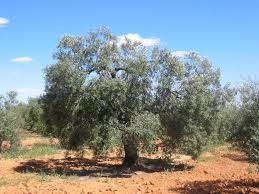 Your Olive Oil May Not Be The Virgin It Claims
Your Olive Oil May Not Be The Virgin It Claims
In 2007, NPR’s All Things Considered ran a story on adulterated olive oil.
Some oil labeled “extra-virgin” is diluted with cheaper olive oils or other vegetable oils. In some cases, lampante, or “lamp oil,” which is made from spoiled olives fallen from trees, is used, even though it can’t legally be sold as food. One fraud ring is accused of coloring low-grade soy oil and canola oil with industrial chlorophyll, and flavoring it with beta-carotene.
The FDA doesn’t routinely test imported olive oil for adulteration, and some products are difficult to test.
Flash forward to 2010, and a follow-up report on Weekend Edition Sunday finds that little has changed. The University of California at Davis has been testing random samples of imported oil, and two-thirds of them don’t pass the test.
Of course, the North American Olive Oil Association which represents importers claims the testing is bogus.
“It’s irresponsible to create the misperception that they’ve done based on unrecognized tests,” he says. “These results directly contradict our 20 years of more extensive sampling than what those results show.”
There’s never been a legal definition in the U.S. for any grade of olive oil, but mounting concern over truth-in-olive-oil-labeling has drawn in the USDA, and new American regulations will conform to international standards. Starting in October, olive oil from every olive oil-producing country, including America, will be subject to random sampling off retail shelves.
This is the reason you should taste the more expensive olive oils before you buy them. Pastaworks, Foster & Dobbs, and New Seasons offer regular sampling. If you have never made direct comparisons before, you’ll find it an enlightening experience. Not unlike the experience of tasting wine, you will find huge variations between various brands. As in wine tasting, there is even an extensive list of 72 olive oil descriptors in a tasting wheel.
You might feel silly, but the best way to taste is by sucking air through the oil in your mouth, and spitting it out. Wine tasters are well-practiced at this technique. Water and green apples are frequently used to clean the palate between tastes.
Things you don’t want to taste: woody, earthy, rancid, winey, musty, metallic, burnt, etc. More desirable characteristics are fruity, bitter, or pungent. Personally, I tend towards the more robust, peppery varieties for general use, but on salads or vegetables, I look for an oil with smoother qualities.
When it comes down to it, pure or not, what matters the most is taste. But be sure you’ve sampled as many as possible, so you can learn which go the best with different foods. As Darryl from Cork pointed out in a comment, “We strongly recommend our customers taste each time they come in to refill their bottles because even the same oils change in flavor profile over time and when their is a vintage or harvest change”.
Keep your oil in a dark, cool cupboard, away from the heat of the stove. I usually pour some in a small bottle which I keep nearby when I’m cooking.
darryl says
You can always sample up to 5 different extra-virgin olive oils out of our bulk fusti program at either cork location. We strongly recommend our customers taste each time they come in to refill their bottles because even the same oils change in flavor profile over time and when their is a vintage or harvest change.
Nancy Rommelmann says
My father (for reasons unknown) last year bought something called “light olive oil,” which I tasted, and translated to mean, “tasteless vegetable oil.” I think the words “olive oil” still have the ability to dazzle, hence, their enlistment in confusion and graft.
johnny says
I think the smoke points higher in light olive oil its what I use to make olive oil beignets it works well for that but that about all its good for.
Tom W. says
Does anyone know of any testing done on the house brand of extra-virgin olive oil for sale at CostPlus Worldmarket? It is extremely affordable ($10/liter) and for the most part, the flavors are very good. I recommend it for the price but it is so inexpensive I have some misgivings about it.
laura says
i’m wondering the same thing about Costco’s house brand…
wine&dine says
City Market, L&E have tasting as well. The spanish olive oils have been a favorite over the last several years. I don’t trust much at the grocery store anymore.
Nice, FD a tasting would be great……give us a heads up on your favorites.
man-o-steele says
Is this yet another reason to shorten the food chain?
Michael says
Any truth in labeling when the label states – Ingredients: 100% Extra Virgin Olive Oil? At TJ’s for example they sell some oils as EVO with no ingredients listed, others with that distinction.
Mr.Gourmet says
Labeling has always bee a problem with regard to olive oil. “First Cold Press” is another problem, it just means that it was pressed only once…thus “First”. Cold Press means that the oil wasn’t heated throughout the process. Also it could be stated that the oil was bottled in a specific region or country, but alas it doesn’t mean necessarily it was made there.